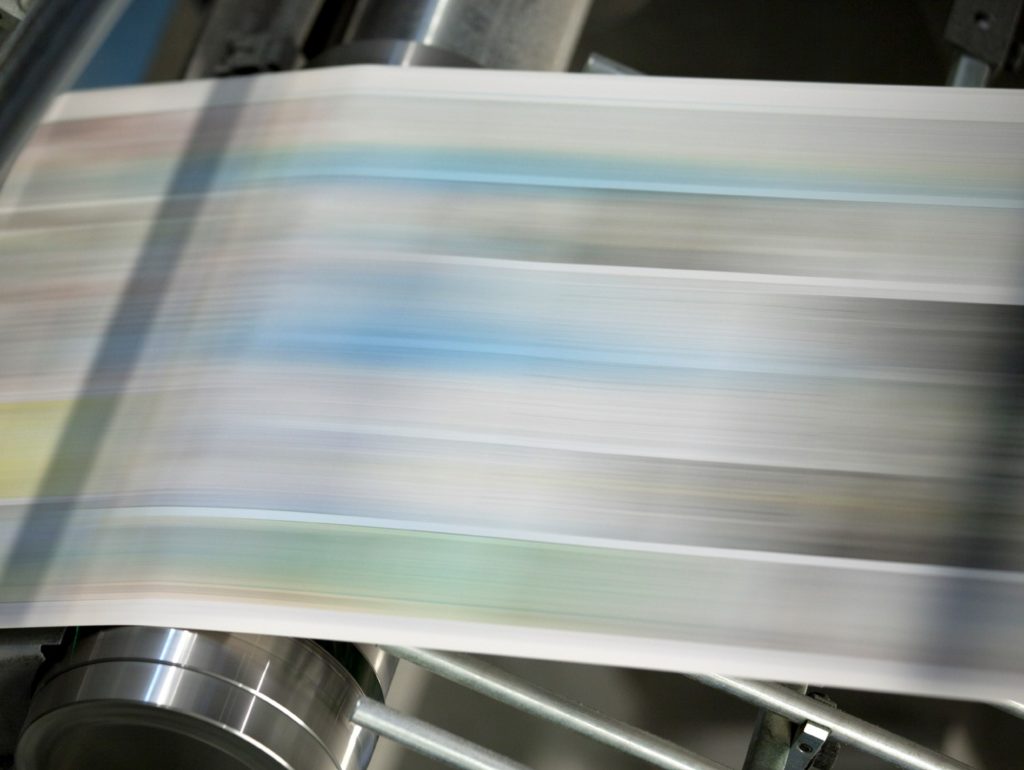Written by Jonathan Edwards
Vice president, Global Business Development, InkJet Solutions, Xerox Corporation
Did you know that Asia is the fastest growing print market in the world? In fact, a 2013 NPES study (“The Worldwide Market for Print: Identifying Global Opportunities for the Print Industry”) predicts that China and Japan will be two of the three largest print markets by 2017, with China is growing five times faster than any other market.
 Coupled with the explosive growth of production inkjet technology and growing demand for book publishing, new doors for business growth are opening for print service providers (PSP) in this region. Inkjet technology is providing new ways for PSPs to meet the diverse demands of their customers by hitting that sweet spot of image quality, speed and substrate needed to capture their piece of this opportunity.
Coupled with the explosive growth of production inkjet technology and growing demand for book publishing, new doors for business growth are opening for print service providers (PSP) in this region. Inkjet technology is providing new ways for PSPs to meet the diverse demands of their customers by hitting that sweet spot of image quality, speed and substrate needed to capture their piece of this opportunity.
According to IT Strategies – a digital printing consultancy firm that focuses on markets in North America, Europe, Japan and China – fifty percent of inkjet installs in Asia are for books. With that kind of opportunity, we’re challenging PSPs to “rethink inkjet” for book publishing.
A Changing Industry
In the book industry, we’ve observed the impact of new business models with the growth of new retail outlets, online bookstores and pay-to-read options on the Web. These new models alter consumer behavior and challenge providers to reinvent traditional methods to support a new wave of thinking. New advances in technology are the driving forces that are helping providers adapt and implement innovative ways to better serve customers.
With this shift, we’re pressed to rethink the book supply chain so customers get the right product and quantity at the right time in the right place. Where there is transformative change, there is an opportunity. In book publishing, that opportunity is inkjet.
One big challenge faced by book publishers is increasing the number of titles without adding strain to working capital. They’re in need of finding options to efficiently produce titles in the right quantities at the point of need, so millions of dollars in working capital doesn’t get tied up in unnecessary inventory. With inkjet solutions, PSPs can minimize inventory holding with digitally-printed, shorter-run lengths. This will help free up capital and drive more titles to be printed more often and at the appropriate, often lower, quantities.
Over the next few years, the goal for publishers is to be out of the print distribution business. When they free themselves from the distribution process and focus more on expanding their titles, it can open significant working capital and reduce inventory holding. Arrangements can be made with print partners and wholesalers globally to fulfill direct orders – creating an infrastructure to easily distribute print files and set up automatic title replacement when needed. With inkjet production options, publishers can get closer to their goals and manage production in a more cost-effective way, without sacrificing quality.
Rethinking Book Publishing with Inkjet
When PSPs are considering the shift to inkjet, acquisition cost is a big factor that comes into play. Every print shop’s economics are different depending on customer mix, pricing, paper, workflow, manufacturing capabilities and operating environments – making each result and equation for inkjet acquisition a little different. By conducting a total cost of operation (TCO) analysis with and without an inkjet solution, PSPs can see how this technology may work for them and their customers. It all boils down to profitability, overall benefits for the print shop and the value proposition PSPs can offer to customers.
Today’s high-volume inkjet printers operate in a highly-complex, ever changing marketplace. That’s why providing the right combination of press, workflow, finishing and support services is so critical. Meeting the exact needs of customer business models means technology is flexible enough to move with the market and positioned for growth.
Book publishing can benefit from inkjet technologies in the following areas:
- Reducing cycle time for on-demand production
- Production of more specialty and self-published titles
- Risk reduction for inventory, warehousing and returns
- Automating workflows to keep the press running with minimal operator time
- Opening new revenue streams by better managing reprints, backlists and out-of-print editions
- Accelerating time to market
- Automating digital publishing for mobile, web, social and print using solutions like Xerox FreeFlow Digital Publisher
The Next Great Wave of Change is Here
There’s no doubt that inkjet is becoming a leading technology as print providers want to grow and push book publishing profitability. It gives users the best of both worlds and no longer forces the sacrifice between speed or volume for image quality, color or personalization. Inkjet technology is closing the gap between offset and digital print – revolutionizing the way print providers do business, especially in the book publishing space.
—
Jonathan Edwards is the Vice President for Global Business Development for Xerox Industrial Inkjet. Xerox has been immersed in the inkjet marketplace for more than 20 years. With the acquisition of Impika in 2013 and expansion into the APAC market in 2014, the company is committed to delivering leading technologies and tools to improve customer operations and enhance value beyond the printed page.



